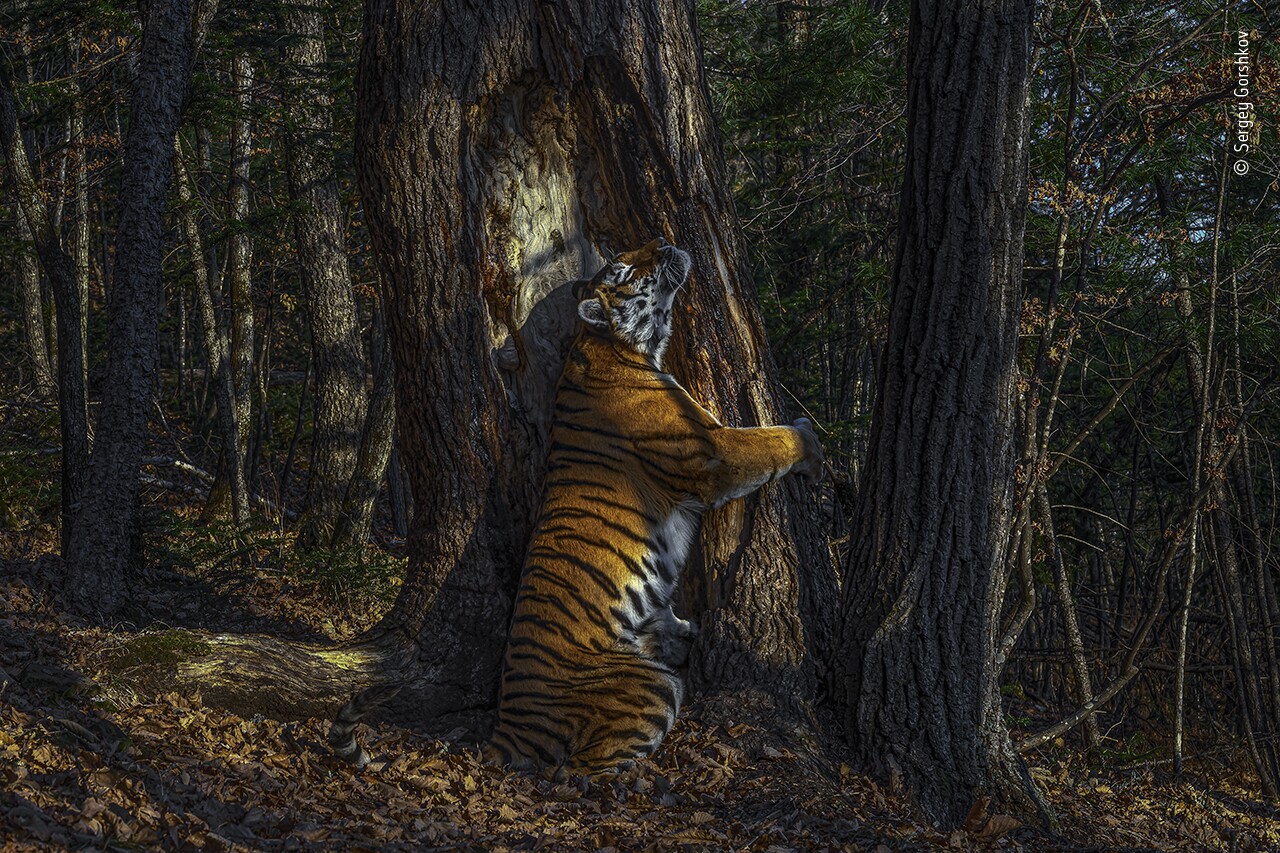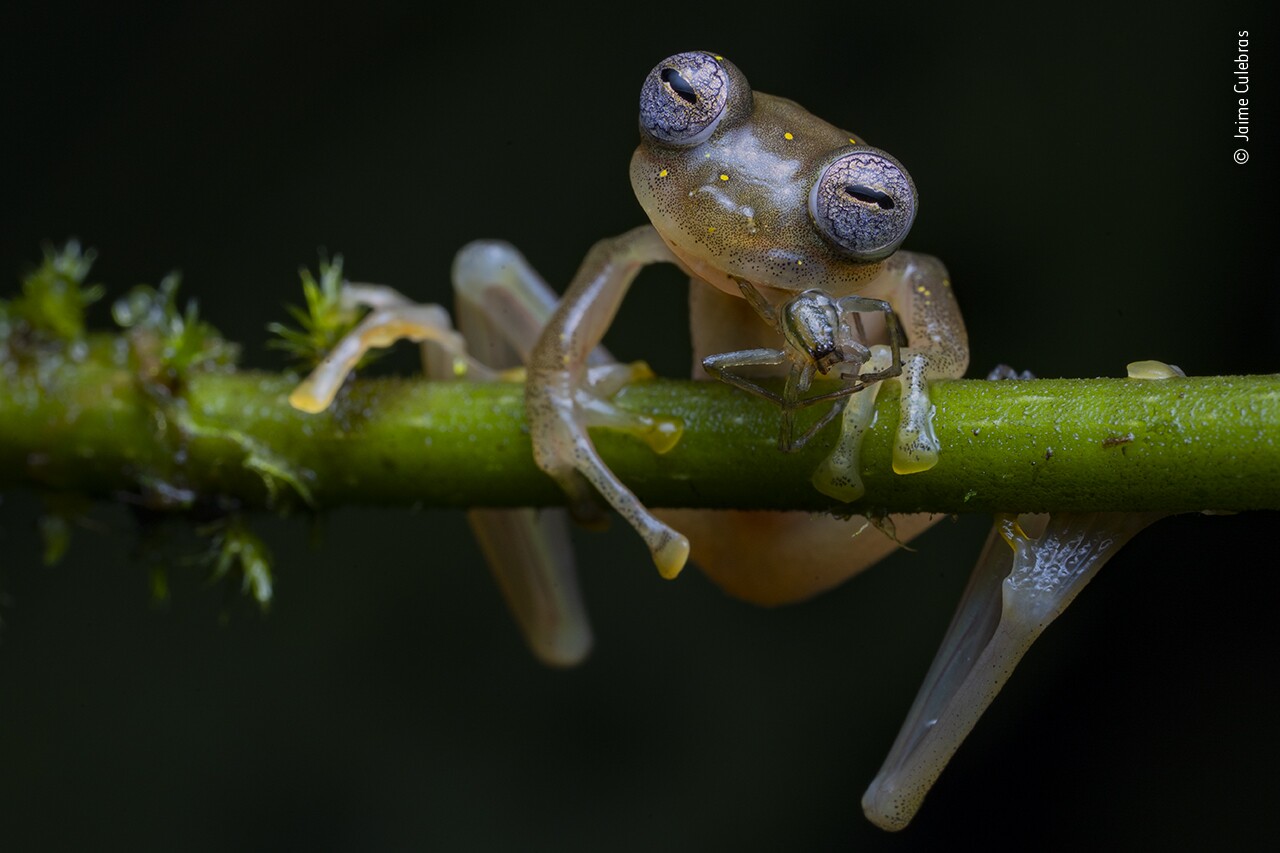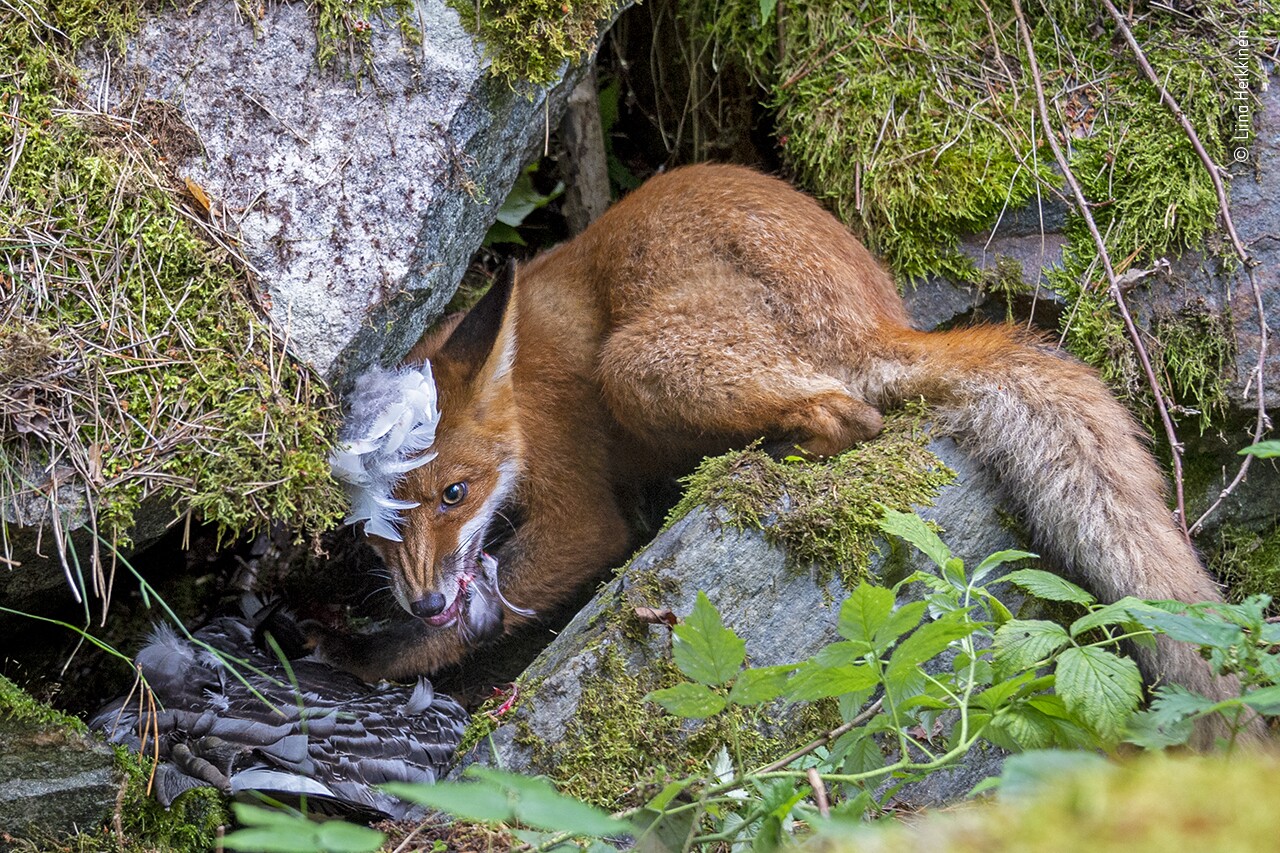This is one of the more prestigious photo awards going around, with a history going back to 1965. Started by the BBC’s Animals magazine, it aimed to highlight species, behaviors and natural events that few people get to see first-hand. The very first winner was presented with his award by no less than Sir David Attenborough, and for the last 38 years, the winners have been put into an exhibition.
This year’s overall winner, bringing in £11,250 (US$15,000) in prize money, was no joke to capture. Russian photographer took nearly a year to shoot it, using motion sensor-activated cameras. It shows a huge Amur (Siberian) tiger scent-marking a fir tree with what looks like an ecstatic hug. There are only 550 or so of these beasts remaining, although that’s a considerable rebound from the 20-30 wild tigers that remained after they were almost hunted into extinction over the last hundred years.

“With an expression of sheer ecstasy, a tigress hugs an ancient Manchurian fir, rubbing her cheek against bark to leave secretions from her scent glands. She is an Amur, or Siberian, tiger, here in the Land of the Leopard National Park, in the Russian Far East. The race –now regarded as the same subspecies as the Bengal tiger –is found only in this region, with a small number surviving over the border in China and possibly a few in North Korea. Hunted almost to extinction in the past century, the population is still threatened by poaching and logging, which also impacts their prey–mostly deer and wild boar, which are also hunted. But recent (unpublished) camera‑trap surveys indicate that greater protection may have resulted in a population of possibly 500–600 –an increase that it is hoped a future formal census may confirm. Low prey densities mean that tiger territories are huge. Sergey knew his chances were slim but was determined to take a picture of the totem animal of his Siberian homeland. Scouring the forest for signs, focusing on trees along regular routes where tigers might have left messages–scent, hairs, urine or scratch marks–he installed his first proper camera trap in January 2019, opposite this grand fir. But it was not until November that he achieved the picture he had planned for, of a magnificent tigress in her Siberian forest environment.”
–
“Hunted to the verge of extinction in the past century, the Amur tiger population is still threatened by poaching and logging today,” said Dr Tim Littlewood, one of this year’s contest judges and the Natural History Museum’s Executive Director of Science. “The remarkable sight of the tigress immersed in her natural environment offers us hope, as recent reports suggest numbers are growing from dedicated conservation efforts.”
The contest also goes out of its way to support and feature young talent, and this year’s Young Wildlife Photographer of the Year award went to Finland’s Liina Heikkinen, who was just 13 when she shot this image of a young fox jealously guarding its dinner – a goose its mother had slain – from its five siblings.
Shekar Dattatri, a wildlife filmmaker and jury member, commented “A sense of furtive drama and frantic urgency enlivens this image, drawing us into the frame. The sharp focus on the fox’s face leads us straight to where the action is. A great natural history moment captured perfectly.”
 Winner in the Under Water category: The Golden Moment
Winner in the Under Water category: The Golden Moment
–
 Winner in the Mammals Category: Mother Says To Run
Winner in the Mammals Category: Mother Says To Run
–
 Winner in the Amphibians and Reptiles category: Life in the Balance
Winner in the Amphibians and Reptiles category: Life in the Balance
–
These shots, along with all the other winners (15 of which we present in our gallery), will be featured in the Wildlife Photographer of the Year exhibition at the Natural History Museum in London until June 2021.
View all 16 images here: https://newatlas.com/photography/2020-wildlife-photographer-of-the-year-winners/
If you enjoy these shots, check out the 2019 competition’s winners as well.
Wildlife Photographer of the Year is developed and produced by the Natural History Museum, London.
Source: Natural History Museum
–
–



















